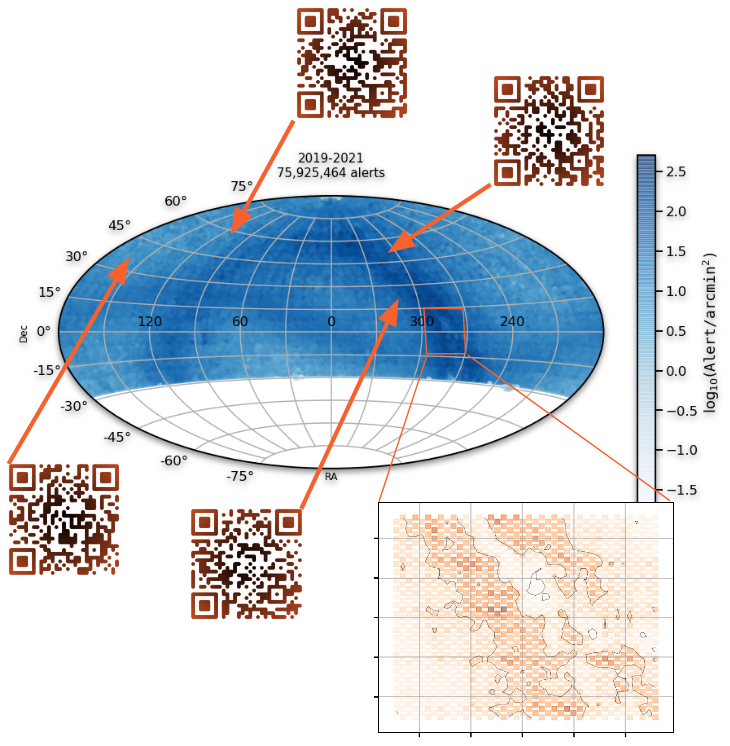Science Roadmap
Each night, telescopes are sending raw alerts, with minimal information such as sky location, flux of the transient, and sometimes historical data at this location. The main role of Fink is to enrich these alerts with additional information to identify interesting candidates for follow-up observations or further scientific processing.

In Fink, this additional information is provided by the broker services (e.g. identification from the CDS cross-match service) and by user-defined science modules (e.g. machine learning classification, or feature extraction algorithms).
Fink science cases
We currently focus on several areas:
- Solar System objects
- Microlensing: compact objects, exoplanets, ...
- Young stellar objects
- Supernovae: Ia, but not only!
- Pair-instability Supernovae
- Active galactic nuclei
- Multi-messenger astronomy: Gamma Ray Bursts, gamma ray, X, gravitational waves counterparts, neutrino, ...
- Anomaly detection: unravelling the unknown
- Impact of man-made objects, such as satellites or debris orbiting around the Earth
There are several modules deployed to probe these science cases, to annotate and flag potential sky alerts that need further attention or inspection. Have a look at our publications for example, or the SN Ia candidates sent every night to the Transient Name Server!
We are open to contributions in those science cases, but also to new contributions that are not listed here. If you have a science proposal and you would like to integrate it with the broker, contact us.
ZTF alert stream
We are currently operating on the ZTF public alert stream, which has constituted an excellent opportunity to engage projects with the scientific community while preparing the ground for the upcoming Rubin Observatory alert data. The ZTF alert data is an unfiltered, 5-sigma alert stream, and you can find all information about the content here. Alerts are coming from all over the sky, and here is for example a projection on the sky of alerts from 2019 to 2021:

In this context we also have strong partnerships with other missions (e.g. SVOM) or network of telescopes (e.g. GRANDMA).
Rubin Observatory
The Rubin Observatory is expected to start operations at the end of 2024. Recently, it disclosed the Community brokers that will have unrestricted access to the complete alert stream for the next decade: ALeRCE, AMPEL, ANTARES, BABAMUL, Fink, Lasair, and Pitt-Google. In the meantime, we are participating for example to the DESC-ELAsTiCC alert challenge to prepare for the deluge of data!